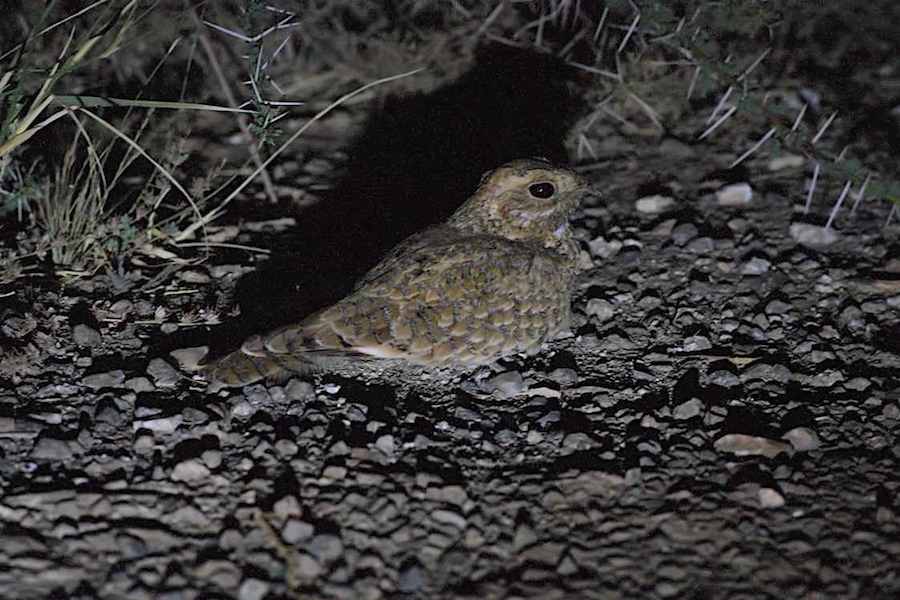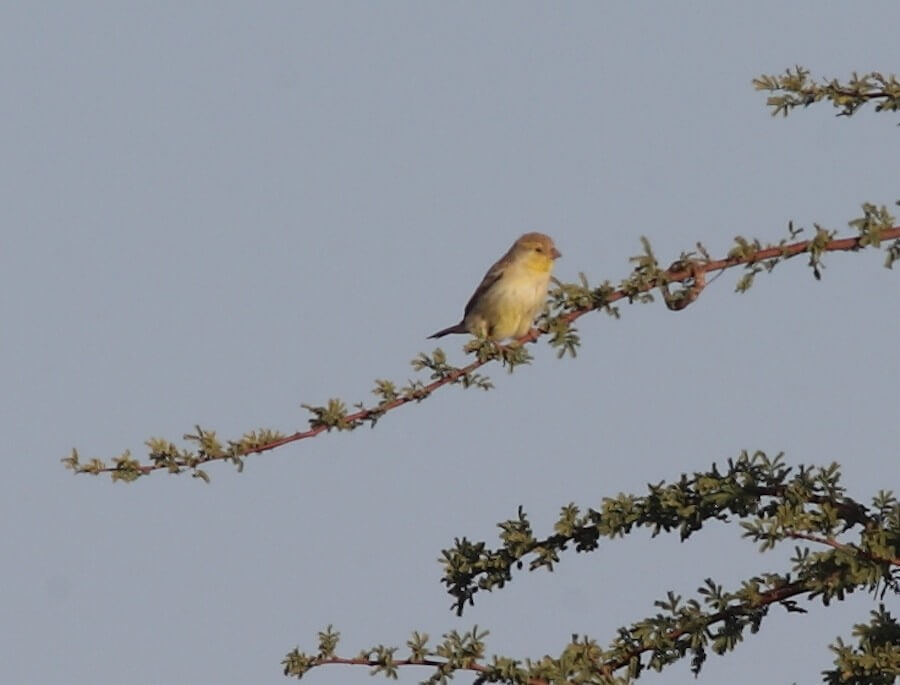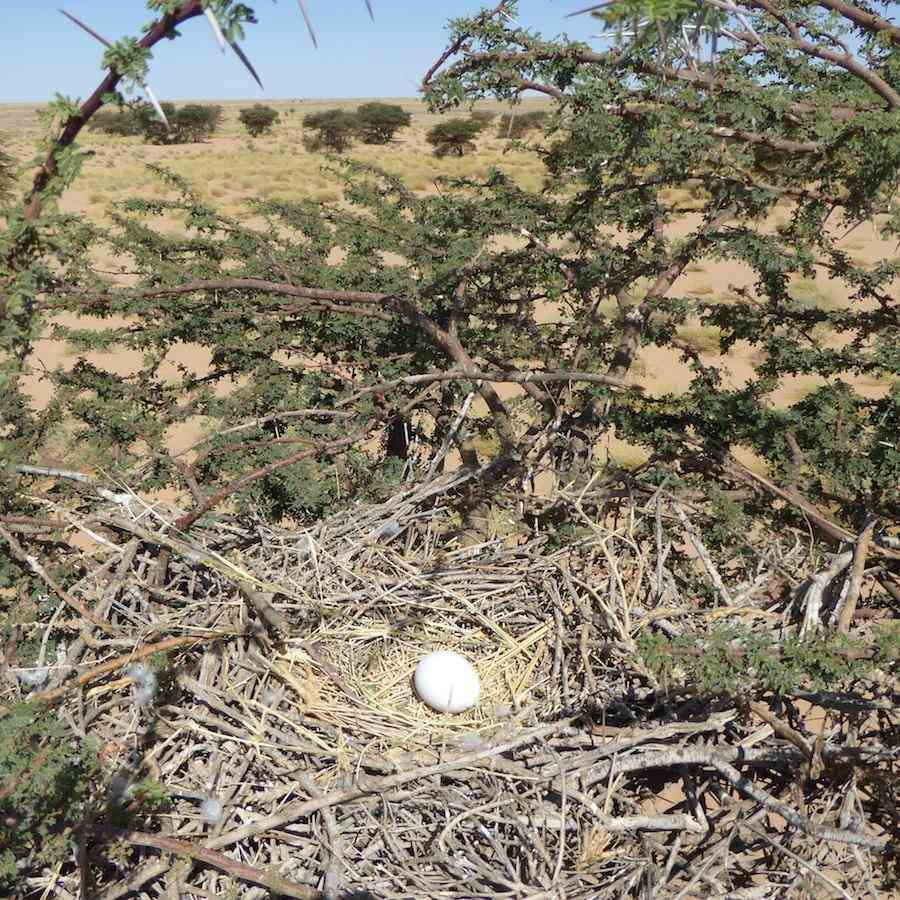Peter Stronach and Bob Swann have just returned back from a trip to Western Sahara along the Aousserd road: ‘We recorded Golden Nightjar and a single juvenile Sudan Golden Sparrow whilst birding at Oued Jenna, details below. Also whilst there we recorded breeding Short-toed Eagle in one of the acacias in the north side.
Golden Nightjar
On the 19th April we heard a Golden Nightjar singing from the road at Oued Jenna. We followed the song to 22°41’31.7” N, 14°29’45.9” W (Point 1), we then recorded another signing bird 400m away to the northeast at 22°41’39.0″N 14°29’34.7″W (Point 2). This is likely to be the same male moving, although we can’t be sure of this. It is possible that due to the full moon the birds were seeing us and constantly moving away from us.
Later in the night we had another individual sat on the road 1.8km away from the previous singing male, ambush feeding at 22°40’36.8″N 14°29’23.9″W (Point 3). We watched this on two occasions on the road before it flew north. Immediately after this we then had another individual 250m away again at 22° 40′ 41.23″N -14° 29′ 31.30″W (Point 4) sat on the road, which we believe to be a different bird.
On the 20th April we heard no singing birds from the road so decided to go and check Point 1 and 2 from the previous night, there was no activity there. We then recorded another singing bird, this was found east of the Oued in the grassland and bare ground areas at 22°41’17.5″N 14°29’12.2″W (Point 5) 900m from points 1 and 2 and 1.2km from the males recorded on the road. Again possibly due to the full moon we could not get close to it.
A map with all the points shown on google maps is on this link.
Our best estimate is that there were four males present in the area. A few points from our brief time with them:
- They don’t have eye shine, which makes spotlighting for them almost pointless unless you see them flying.
- They were not responding to tape, Dan Brown et al had reported that they were very responsive back on the 16th March 2016 so this may well just be the stage they are it in the breeding cycle.
- Feeding style – the bird we observed on the road was making short flights returning to the same position in the road. We didn’t see it catch anything unfortunately!.
- The calling of the bird is very deceptive, the individual we heard from the road had the same volume of call from 200m away as it did from 1.2km away!. When we got close the volume finally increased.
- There is swarming of Desert Locusts currently with the gregaria type massing and forming huge columns marching across the Aousserd road. The Handbook of the Birds of the World mentions a study in Niger where 85% of the diet of the studied bird was orthopterans. This may be the reason that Golden Nightjar has started appearing after the heavy rains in 2014/2015.
Unfortunately on the 20th April a Dutch birding team found a dead roadkill male Golden Nightjar at Point 4. This has been brought back and will be sent to the Zoology museum in Amsterdam. The weight was 63.6g, which fits with it being a male based on the figures in the Handbook of the Birds of the World, but this will be checked with DNA testing.
Sudan Golden Sparrow
We had a single juvenile individual on the 20th April in the morning with a large flock of Desert Sparrow on the north side close to the road. There were amazing numbers of Desert Sparrow present, we counted 250 in the north part of the wadi alone. All feeding on the seeds of the grass growing in the wadi, as well as on locusts. We searched the wadi several times later in the day and the following day and could not relocate the sparrow.
Short-toed Eagle
We found a nest of Short-toed Eagle in the north part of Oued Jenna, this contained a single egg. (2nd breeding record for the area, see https://go-south.grepom.org/wp-content/uploads/2014/07/gsb_8_114-124.compressed.pdf)
Other observations. Much of the desert vegetation was very desiccated compared to what Bob saw during his visit in January. This was particularly true of the areas that had been favoured by Dunn’s Larks. As a result we saw very few Dunn’s Larks suggesting they had moved out. Black-crowned Sparrow Larks were still present in large numbers with high numbers of juveniles suggesting good breeding success’




‘Regarding the Sudan Golden Sparrow, it was a juvenile but we had assumed this had come north, but can’t be certain. Eric Didner recently had large numbers in northern Mauritania. I think the timing of their breeding is related to the rains and seed production in grasses, so hard to be definite as to origin’ (Peter Stronach)